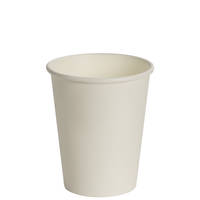VIDEO TUTORIAL
Rose Quartz Effect Video Guide
What is this video about?
This video tutorial is designed to accompany our Rose Quartz Countertop Kit and provides full details on the process, colours, and blending techniques used to create a stunning, convincing rose pink marbled resin countertops using the kit.
This video only covers the colours and blending techniques for the Rose Quartz effect and is intended to be watched alongside our Complete Resin Countertop Tutorial for a complete understanding of the resin countertop process.
As well as the main countertop tutorial, this video is also accompanied by a downloadable colour card which includes full details for the weights and measurements of resin and pigment throughout the process.
How to Create a Beautiful Rose Pink Marbled Countertop
The key to perfecting this beautiful rose quartz effect lies in using two different shades of slightly sparkly, translucent pink base mix which is layered over the top of stronger pink tints, allowing them to show through from underneath and creating a real sense of depth. Finer details of darker pink and sparkling gold echo the fissures and veins of real marble or quartz and complete the look.
Before starting, you should familiarise yourself with the instructions in the main countertop tutorial and prepare your work area and countertops according to those instructions.
The Primer Coat
- Create the primer coat by adding 10% Super White Colour Pigment to a smaller batch of the GlassCast 3 resin.
- Apply the white primer coat to your surfaces to block out any colours or patterns from underneath and create the white background for the white marble effect.
- Allow the primer coat to cure before 'keying' it to ensure a good bond and adding a resin barrier to the front edge.
Mixing the Colours for the Main Pour
- For the main pour, begin by creating the base mix by adding Arctic Pearl SHIMR Powder, Super White CULR pigment and a few drops of Tomato Red CULR pigment to a large batch of the GlassCast 3 resin.
- Divide off just less than half of the light pink base mix and add a few more drops of Tomato Red CULR pigment to make a medium pink.
- Pour a small amount of the base mix into a small mixing cup and add a few more drops of Tomato Red CULR pigment to make your dark pink tint.
- Finally, pour a small amount of base mix into a small mixing cup and add a few drops of Gold CULR pigment to make your gold accent.
Pouring, Layering and Blending the Colours
Within 30 minutes of mixing
After adding the hardener to the resin, you have 30 mins to get the resin out of the pots and onto the countertops.
- Begin by pouring about 2/3 of the light pink base mix out onto your countertops in patches.
- Take the medium pink mix and pour about 2/3 of that mix onto your counters, into the spaces between the light pink resin.
- Use a notched spreader to spread out the light and medium pink resins without mixing them together too much.
- Use a paintbrush to smooth and blend the two colours slightly.
- Use a mixing stick to drizzle trails of the dark pink tint and gold accent in thin lines across your countertops.
- Use a paintbrush to slightly blend these veins and then blow them with a hairdryer to soften them.
- Pour the remaining light pink and medium pink resin out onto the countertop, over the top of the other colours.
Within 1 hour of mixing the resin
With almost all the resin on the countertops, you now have a remaining 30 mins to blend and perfect the appearance.
- Use a paint brush to slightly blend and smooth out the resin.
- Drizzle out thin lines of dark pink tint and gold accent, following the lines of your underlying shading.
- Use a hair dryer to break up the thin lines of the veins into more natural, irregular fractures.
- Continue with the paintbrush and hair dryer until you're happy with the look but aim to finish with the hairdryer in order to break up any obvious brush marks.
- You must stop working within 1 hour of first mixing the resin.
DISCUSSION (1)
Please share any questions or comments you may have about this video tutorial.
Existing silicone on a worktop does not need to be removed when preparing a worktop. Old silicone like that does not cause any issues with the resin. The only time we would be cautious is if it is fresh silicone. If making new worktops, do not use silicone until the GlassCast project is complete, at which time you can seal any gap between the tiles and resin surface, much like you would with a normal worktop.
LEAVE A COMMENT OR QUESTION
Downloads (1)
| Resin Countertop Handbook |
USED IN THIS PROJECT
Want to buy the same materials and equipment used in this tutorial? We've got you!
Please find below a list of all the materials and equipment used in this project, all available to buy right here on the GlassCast website. Shown alongside each product is the approximate quantity used in the tutorial video, to the nearest full pack.
ANCILLARIES







COUNTERTOP KITS


RESIN & PIGMENTS




DISCUSSION (1)
Please share any questions or comments you may have about this video tutorial.
Existing silicone on a worktop does not need to be removed when preparing a worktop. Old silicone like that does not cause any issues with the resin. The only time we would be cautious is if it is fresh silicone. If making new worktops, do not use silicone until the GlassCast project is complete, at which time you can seal any gap between the tiles and resin surface, much like you would with a normal worktop.